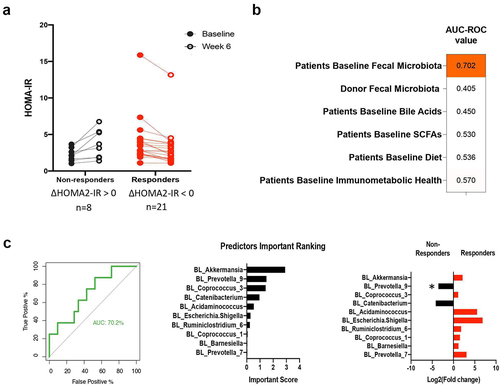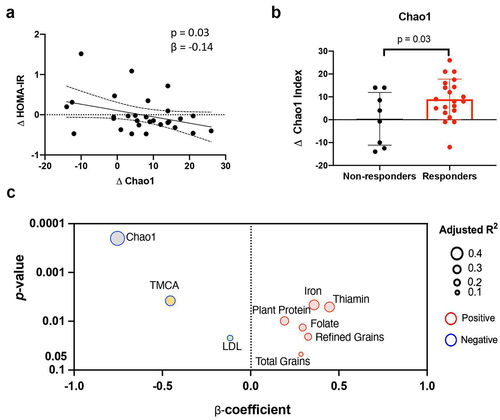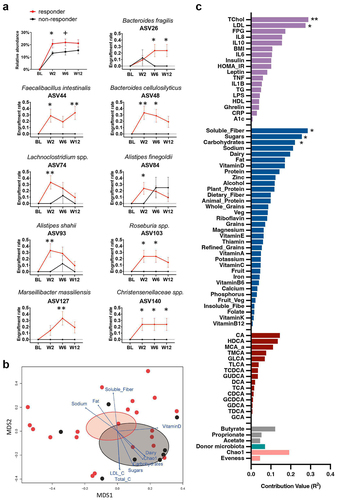Figures & data
Figure 1. Identification of FMT recipient factors that predict HOMA-IR responses by machine learning.

Figure 2. FMT recipient factors at baseline are associated with the differences in fecal microbiota changes in diversity between responders and non-responders in HOMA-IR.

Figure 3. FMT recipient baseline factors predict donor-specific ASVs engraftment.

Supplemental Material
Download Zip (1.8 MB)Data availability statement
The raw sequencing data have been deposited into the Sequence Read Archive (SRA) of the NCBI (http://www.ncbi.nlm.nih.gov/sra) under BioProject PRJNA708262. All other relevant data related to the current study are freely available from the corresponding author (K.L.M.) upon request, which does not include confidential patient information.
